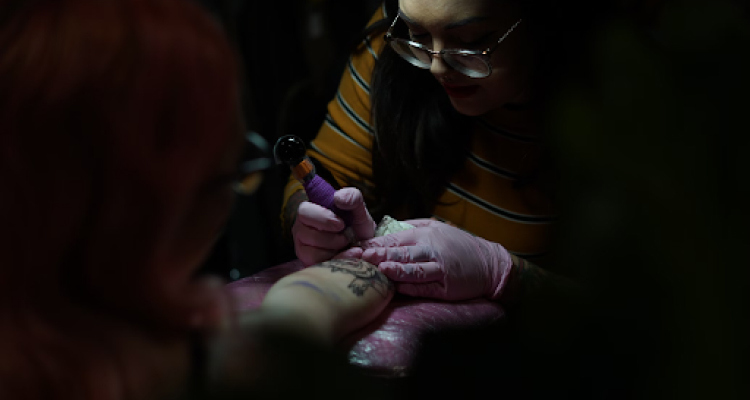
Why Gloves Are a Must-Have in the Tattoo Artist’s Toolkit
Posted on
Tattooing is an art form that requires skill, precision, and utmost attention to detail. Tattoo artists are not only artists but also craftsmen who transform blank canvases into masterpieces of self-expression. Amid the creativity and technique, one essential tool often takes a backseat in discussions – the humble glove. While gloves might seem like a minor aspect of the tattooing process, they are, in fact, a crucial element of a tattoo artist’s toolkit. So, here are some of the reasons why gloves are a must-have for every tattoo artist – exploring their significance in maintaining hygiene, ensuring client safety, improving artist dexterity, and enhancing overall professionalism.
Maintaining Hygiene
Hygiene is paramount in the tattoo industry, where the process involves penetrating the skin with needles, making it essential to minimize the risk of infections. Gloves act as a vital barrier between the artist’s hands and the client’s open skin. Tattooing requires the use of various inks, needles, and equipment, all of which come into direct contact with bodily fluids, making choosing latex gloves a mandatory step before starting a tattoo session. By wearing gloves, artists prevent the transmission of pathogens, protecting both themselves and their clients from potential infections.
Ensuring Client Safety
Tattooing involves repetitive movements and intricate designs that demand the artist’s full attention. In the midst of this artistic focus, it’s easy to overlook accidental nicks or cuts that might occur. However, even the tiniest cut on the artist’s hand can become a potential source of infection for the client. Wearing gloves not only safeguards the artist’s hands from inadvertent cuts but also eliminates the risk of these cuts becoming entry points for contaminants into the client’s skin.
Improving Artist Dexterity
One might assume that wearing gloves could impede an artist’s dexterity, making it difficult to execute intricate designs. However, advancements in glove materials have addressed this concern. Modern tattoo gloves are designed to provide a snug fit, allowing for a natural range of motion and tactile sensitivity. This means that artists can maintain their precision and finesse while also benefiting from the protective barrier that gloves offer.
Enhancing Professionalism
Tattooing has evolved into a respected and recognized art form, finding its place in galleries and cultural conversations. As the industry gains more recognition, professionalism becomes a distinguishing factor. The use of gloves not only demonstrates a commitment to hygiene and safety but also reflects the artist’s dedication to their craft. Clients are more likely to trust an artist who prioritizes their health and well-being, leading to better customer relations and positive word-of-mouth.
Preserving Ink Integrity
Beyond their protective benefits, gloves also play a crucial role in preserving the integrity of the tattoo ink. Tattoo inks are carefully selected for their vibrancy and longevity, and any contamination introduced during the process could compromise the final result. By wearing gloves, tattoo artists prevent their natural skin oils, sweat, or other potential contaminants from coming into contact with the tattoo ink. This ensures that the ink remains pure and untainted, leading to a more vibrant and long-lasting tattoo that clients can proudly display for years to come.
Adhering to Industry Regulations
The tattoo industry is subject to various health and safety regulations that ensure the well-being of both artists and clients. These regulations often mandate the use of personal protective equipment, including gloves, during the tattooing process. By adhering to these regulations, tattoo artists not only avoid legal issues but also demonstrate their commitment to upholding the highest standards of safety and professionalism. Clients can have peace of mind knowing that the artist follows industry guidelines, creating a sense of trust that further solidifies their relationship.
Glove Types for Tattooing
When it comes to choosing gloves for tattooing, there are primarily two types that tattoo artists commonly opt for latex gloves and nitrile gloves. Both types have their own set of advantages and considerations.
- Latex Gloves: Latex gloves are a popular choice due to their excellent fit and tactile sensitivity. They conform well to the hand, offering a snug and comfortable feel that allows for precise movements during tattooing. Additionally, latex gloves provide a high level of dexterity, which is crucial when working on intricate designs.
- Nitrile Gloves: Nitrile gloves have gained popularity as an alternative to latex gloves, particularly due to their hypoallergenic nature. They are made from a synthetic rubber material that is less likely to cause allergic reactions. Nitrile gloves are also highly resistant to punctures, chemicals, and contaminants, making them an excellent choice for maintaining a sterile environment during tattooing.
Flexibility and Specialty Gloves
Tattoo artists often require different types of gloves for various stages of the tattooing process. While nitrile gloves are commonly used due to their durability and resistance to chemicals, artists also have the option to use specialty gloves tailored to specific tasks. Thin, sensitive gloves might be preferred for intricate linework, while thicker gloves might be used for handling equipment or larger color areas. This flexibility allows artists to choose gloves that best suit their needs, ensuring both comfort and protection throughout the tattooing process.
Choosing the Right Material
The choice between latex and nitrile gloves often comes down to personal preference and any allergies or sensitivities. If neither the artist nor the client has latex allergies, latex gloves might provide the best combination of fit and dexterity. However, if allergies are a concern or if the artist prefers a more robust barrier against potential contaminants, nitrile gloves are a safe and practical choice.
Considerations for Tattoo Artists
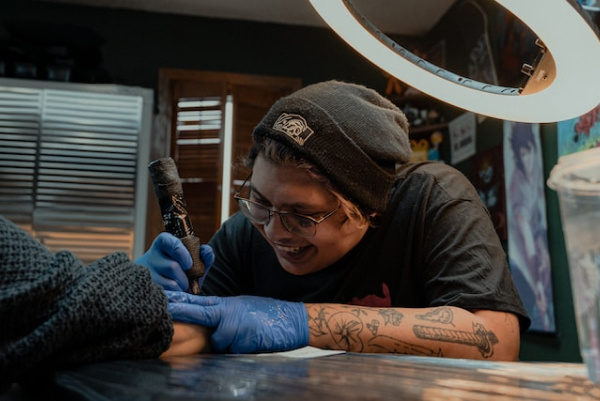
When selecting gloves, tattoo artists should consider factors beyond just the material. The thickness of the gloves can impact tactile sensitivity and durability. Thinner gloves might be preferred for delicate linework, while slightly thicker gloves could offer better protection during the setup and cleanup phases.
Additionally, glove size is crucial. Ill-fitting gloves can be uncomfortable and hinder precise movements. Artists should choose gloves that fit snugly without being overly tight. It’s also a good practice to change gloves between different stages of the tattooing process to maintain cleanliness.
The significance of gloves transcends mere physical protection, extending to ink preservation, regulatory adherence, and customized solutions. As tattooing continues to intertwine tradition with innovation, and the artistic realm merges seamlessly with the medical, gloves remain an unwavering constant. Tattoo artists and enthusiasts alike recognize that gloves are not just a practical necessity but a symbol of respect for the craft, the client, and the artistic journey that culminates in a stunning piece of body art.

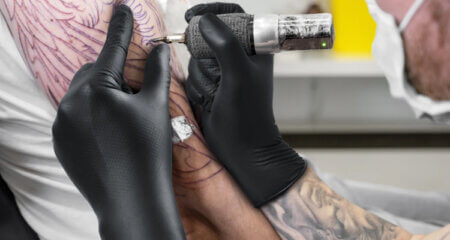
![30 Best Cobra Tattoo Ideas, Designs And Meaning [2025] 30 Best Cobra Tattoo Ideas, Designs And Meaning [2025]](https://www.trendingtattoo.com/wp-content/uploads/2025/01/Cover-2-450x240.jpg)
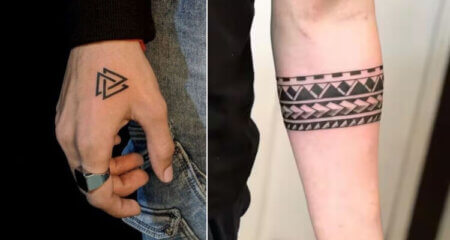
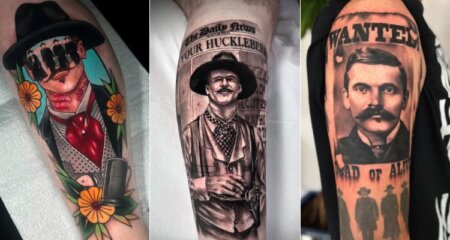

![Trending Tattoo Designs for Girls [2024] Trending Tattoo Designs for Girls [2024]](https://www.trendingtattoo.com/wp-content/uploads/2024/09/Trending-Tattoo-Designs-for-Girls_1-450x240.jpg)
